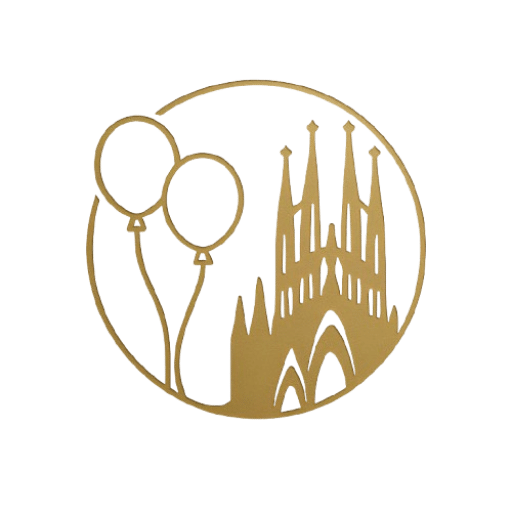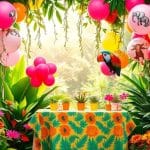- What are traditional Catalan elements in modern balloon decoration?
- How is the Palau de la Música Catalana relevant to Catalan traditions?
- What makes Casa Batlló a symbol of Catalan culture?
- How can traditional Catalan elements be incorporated into balloon decoration?
- Why is understanding Catalan architecture important for artists?
- What are the key features of traditional Catalan design?
- Related questions about Catalan elements in decoration
Incorporating traditional Catalan elements into modern balloon decoration is a unique way to celebrate the rich culture of Catalonia. This fusion not only enhances aesthetic appeal but also serves to honor the historical significance of these elements. From iconic architecture to vibrant motifs, there's much to explore in this captivating blend.
As we delve into the various aspects of traditional Catalan elements in modern balloon decoration, we will examine notable landmarks, artistic influences, and practical techniques that can be utilized in creating stunning party decorations.
What are traditional Catalan elements in modern balloon decoration?
Traditional Catalan elements encompass a variety of artistic styles, colors, and motifs that reflect the region’s rich heritage. In modern balloon decoration, these elements can be integrated through color schemes inspired by Catalan flags, or by using shapes that mimic local architecture.
One key aspect is the use of vibrant colors like red and yellow, which are prominent in the Catalan flag. These colors can be effectively used in balloon arrangements to create a festive atmosphere that resonates with local culture.
Another element is the incorporation of geometric forms and natural motifs that echo the designs seen in the works of Antoni Gaudí. Balloons can be shaped to replicate these forms, allowing decorators to connect their work with the iconic architecture of Catalonia.
How is the Palau de la Música Catalana relevant to Catalan traditions?
The Palau de la Música Catalana, designed by Lluís Domènech i Montaner, is a UNESCO World Heritage site that exemplifies Catalan Modernisme. Its intricate mosaics, stained glass, and sculptures highlight the artistic spirit of the region. This venue not only serves as a concert hall but also as a symbol of Catalonia’s cultural revival.
Incorporating elements from the Palau into balloon decoration can involve using color palettes inspired by its stained glass windows. For example, bright hues of blue, green, and gold can be used in balloon arrangements to evoke the building’s stunning interior.
The architectural features, such as the use of floral motifs, can inspire balloon decorations that bring a touch of natural beauty to any event. By reflecting these elements, decorators can celebrate Catalan traditions while creating visually striking displays.
What makes Casa Batlló a symbol of Catalan culture?
Casa Batlló, another masterpiece by Antoni Gaudí, stands as a testament to the creativity and innovation of Catalan culture. The building’s organic shapes, vibrant colors, and intricate detailing create a unique visual experience that captivates visitors.
In balloon decoration, the flowing forms and organic motifs of Casa Batlló can be mirrored through the use of twisting techniques. By creating balloon sculptures that echo the building’s curves, decorators can capture the essence of Gaudí's architectural style.
The dragon-shaped roof of Casa Batlló serves as an inspiration for thematic parties, where balloons can be arranged to resemble the mythical creature, celebrating both Catalan folklore and modern artistry.
How can traditional Catalan elements be incorporated into balloon decoration?
Integrating traditional Catalan elements into balloon decoration involves creativity and an understanding of local aesthetics. Here are several techniques to achieve this:
- Color schemes: Use the colors of the Catalan flag, red and yellow, as a primary palette in balloon arrangements.
- Motifs: Incorporate floral designs and geometric patterns that reflect the works of Gaudí and other Catalan artists.
- Shapes: Create balloon sculptures that mimic the organic forms found in Catalan architecture.
- Textures: Use a mix of matte and glossy balloons to emulate the variety of materials used in traditional Catalan buildings.
By employing these techniques, decorators can create stunning setups that celebrate Catalonia’s rich cultural heritage while appealing to modern sensibilities.
Why is understanding Catalan architecture important for artists?
Understanding Catalan architecture is crucial for artists and designers as it provides context and inspiration for their work. The unique styles and elements found in this architecture offer a wealth of ideas that can be translated into various artistic mediums, including balloon decoration.
For example, the intricate details and harmonious designs of Modernisme architecture can inspire artists to incorporate similar aesthetics into their projects. This understanding allows for a deeper connection with the cultural significance of the work.
Additionally, knowledge of Catalan architecture fosters a sense of appreciation for local traditions, enabling artists to create works that resonate with audiences on a cultural level, thus enriching the overall artistic landscape.
What are the key features of traditional Catalan design?
Traditional Catalan design is characterized by several distinctive features that reflect the region's history and culture:
- Natural forms: Organic shapes inspired by nature are prominent in Catalan architecture and design.
- Colorful mosaics: Vibrant tiles and decorative elements are commonly used, enhancing visual appeal.
- Use of light: Strategic incorporation of natural light to create ambiance is a hallmark of many Catalan structures.
- Floral motifs: Decorative patterns that mimic flowers and plants are prevalent throughout various artworks.
These features can be effectively translated into balloon decoration, allowing artists to create pieces that are not only visually striking but also culturally significant.
What are the characteristics of Catalan modernism architecture?
Catalan modernism architecture is known for its elaborate ornamentation, asymmetrical forms, and integration of nature into design. Buildings often feature colorful mosaics, organic shapes, and intricate details that reflect the natural world. This style seeks to break away from traditional architectural norms, resulting in highly unique structures.
Furthermore, Catalan modernism often incorporates local materials and artisanal craftsmanship, celebrating the region's cultural heritage through architecture. Understanding these characteristics can inspire contemporary artists to incorporate similar elements into their creative endeavors.
What are the elements of Barcelona design?
Barcelona design elements include a mix of traditional Catalan motifs and modern influences. The city is renowned for its use of color, texture, and innovative forms, which can be seen in both architecture and product design. Key features often involve fluid shapes, vibrant colors, and a strong connection to nature.
Additionally, artists and designers draw inspiration from Barcelona's rich history, incorporating historical references into modern contexts, such as in balloon decorations that celebrate local culture during festivities.
Who is the Catalan architect that is responsible for designing a lot of interesting buildings in Barcelona?
Antoni Gaudí is perhaps the most famous Catalan architect, known for his extraordinary contributions to Barcelona's architectural landscape. His designs, including the Sagrada Família and Park Güell, showcase his unique vision and mastery of form, color, and texture. Gaudí's work remains a significant influence on contemporary architects and artists alike.
His innovative use of organic shapes and vibrant colors serves as an endless source of inspiration for designers, including those specializing in balloon decoration.
What is Casa Batlló inspired by?
Casa Batlló is inspired by various natural forms, particularly marine life and the legend of Saint George, the patron saint of Catalonia. The undulating façade and colorful tiles evoke the movement of water, while the dragon-shaped roof pays homage to the mythical tale. This connection to nature and folklore makes Casa Batlló a rich source of inspiration for artists and decorators.
By utilizing similar themes and motifs in balloon decoration, creators can encapsulate the essence of this iconic building, celebrating the cultural and artistic heritage of Catalonia.
En este contexto, te presentamos un video que explora cómo los elementos tradicionales catalanes se integran en la decoración moderna con globos.

Please note that all prices displayed on this website are for reference only. Final pricing may vary depending on the specific decoration requirements, materials, and event details. Contact us for a personalized quote tailored to your unique celebration!



Deja una respuesta